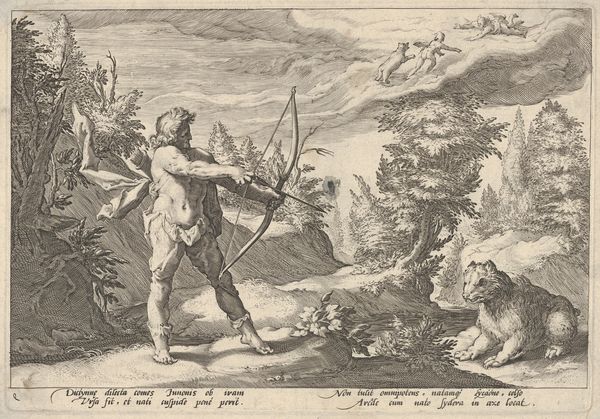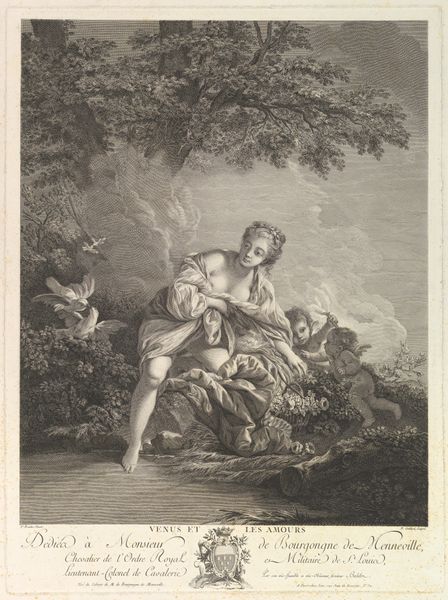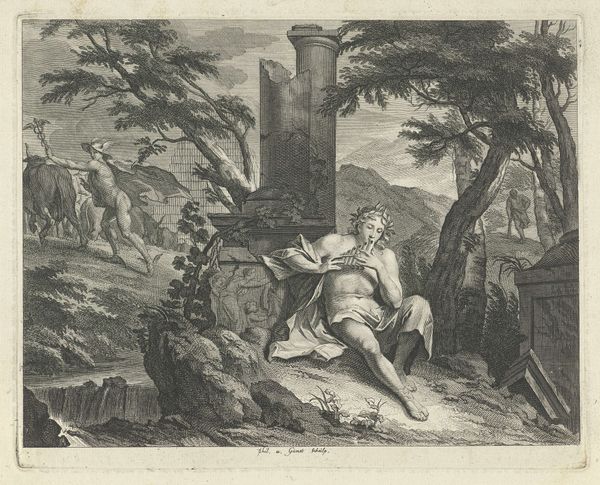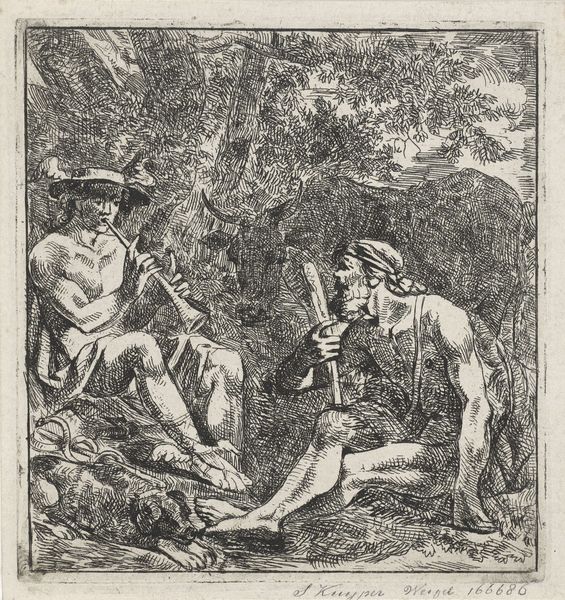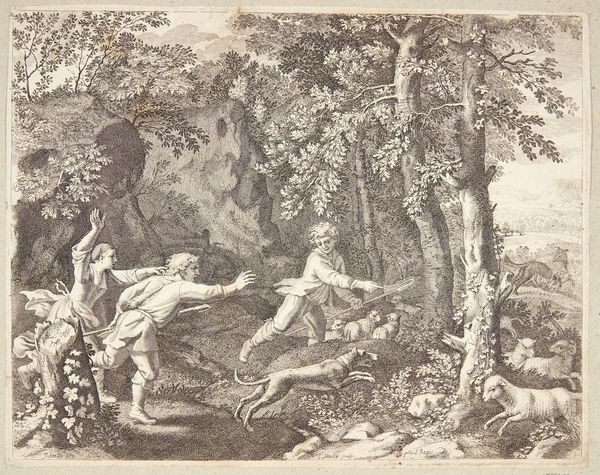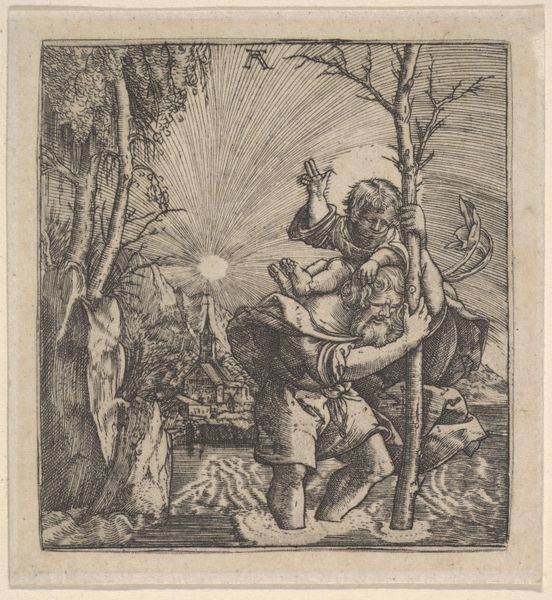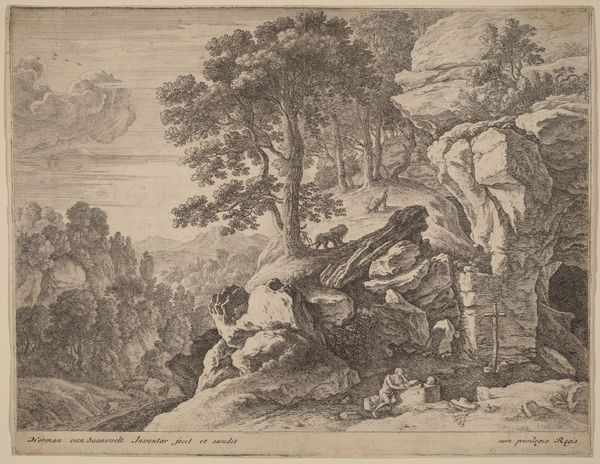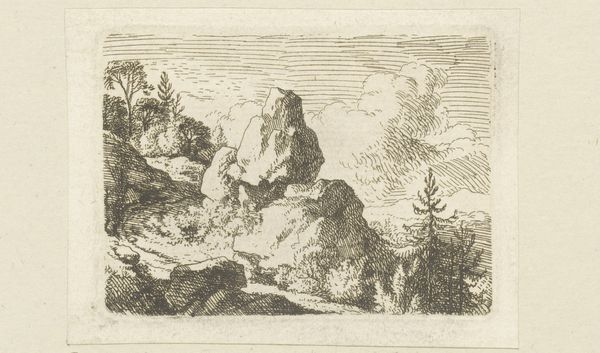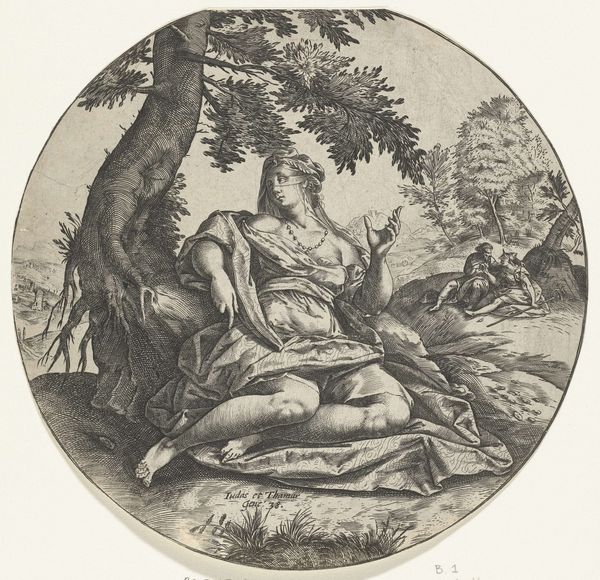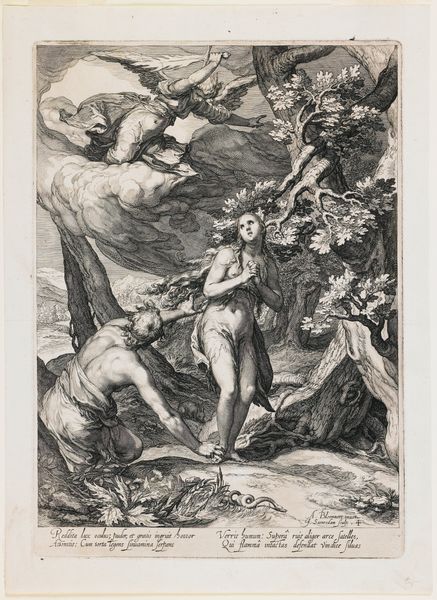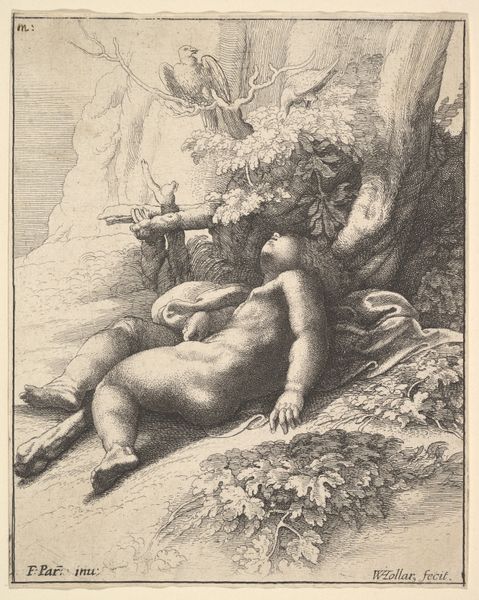
The prodigal son seated at the base of a tree among swine, his gaze directed upward and his hands folded at his chest, surrounded by a wooded landscape and a pigsty 1640 - 1650
0:00
0:00
drawing, print, ink, pen
#
drawing
#
ink drawing
#
baroque
#
pen drawing
# print
#
pen sketch
#
landscape
#
figuration
#
ink
#
pencil drawing
#
pen
#
genre-painting
#
history-painting
Dimensions: sheet: 8 1/8 x 12 in. (20.6 x 30.5 cm)
Copyright: Public Domain
Pietro Testa produced this etching of the Prodigal Son in seventeenth-century Italy, at a time when the Catholic Church was reasserting its authority. The artist has staged a particular moment in the well-known biblical parable. We see the son, reduced to penury, contemplating his past mistakes whilst working as a swineherd. The image is rich with the visual codes of repentance: he looks to the heavens, his hands clasped in prayer. Yet, it is the artist's naturalistic approach to religious imagery that is most striking. Testa places the Prodigal Son in a detailed landscape, surrounded by symbols of his degradation. The pigsty and the swine are rendered with careful attention, highlighting his alienation from society. Art historians consult religious texts, social histories, and the artist's other works to understand the complex relationship between faith, society, and artistic expression in the Baroque period. This etching reflects a society grappling with questions of redemption and the individual's place within a divinely ordered world.
Comments
No comments
Be the first to comment and join the conversation on the ultimate creative platform.
